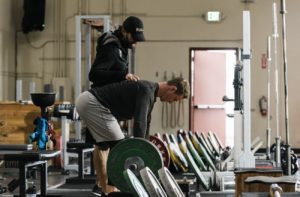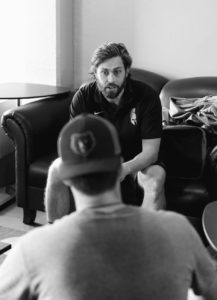
At its simplest level coaching is teaching, yet rarely are strength and conditioning coaches educated in pedagogy and the science and art of teaching itself. The emphasis for young coaches is put on learning and understanding the basics of human physiology, anatomy, and biomechanics. These days the ability to utilize and understand different technologies often comes next, but we are neglecting educating coaches on the actual ability to teach others. Being a great teacher no doubt requires an in depth knowledge of the subject matter, but being a Ph.D. alone rarely makes you a great teacher, in fact, most of my best coaches and educators didn’t have the most impressive degrees or qualifications. They understood the goal of teaching is to get an athlete or student to understand the concepts and perform, not just supply information and see what happens. The best coaches, more times than not, are great teachers.
Only designing a quality training program alone doesn’t work any better than creating a quality lesson plan, or having a solid playbook. Nothing is accomplished without actually imparting this information onto others. In my experiences, I continue to be amazed at the lack of actual coaching that is happening both on the field and in the weight room at all levels of the sport. The lack of formal practical coaching experience in the education process leads young coaches to obsess over learning different exercise variations, periodization schemes, loading parameters, and program designs.
Just like a lesson plan or a playbook, a written training program is a (hopefully) well thought out plan designed with intent. But these ideas are only worth the paper it is printed. The truth is it doesn’t matter what movements your athletes are doing if they aren’t doing them well. Sprinting, jumping, and lifting are all necessary and all great tools we can use to improve athletic ability, but HOW you do these movements are just as important as how much and how often.
Just recently I was visiting a college coach at the elite level, and we discussed one of the recruits that were brought in with a surprising low baseline level of fundamental movement. We can only theorize as to why this was the case, but it seems to be happening more and more. Many youth coaches are obsessed with strategy and neglect fundamental movement education. You don’t need to be a former elite athlete to coach young athletes, but only telling them what to do on a given play isn’t teaching the fundamentals of the sport. Fundamentals are in how they do these movements. Just because an athlete is tagged as “elite” does not mean they always understand how to different movements you are going to ask them to do. Telling someone what to do is simple, getting them to make changes on how they are doing things takes much more time and effort.
Coaches absolutely should have a basic understanding of human physiology, anatomy, and biomechanics to help them to understand the basics of program design. But once this basic knowledge is attained, the bigger challenge is teaching athletes not only the how but also the why. Take the time to create trust between a coach and an athlete. That confidence is a foundational requirement to ensure athletes are engaged in learning to allow true teaching or coaching to occur.

If the lesson plan were all that mattered our educational system wouldn’t have any of the challenges it has today. The information exists, but creating the relationships and trust to get the student brought in is a crucial step.
“In the end, it’s about the teaching, and what I always loved about coaching was the practices. Not the games, not the tournaments, not the alumni stuff. But teaching the players during practice was what coaching was all about to me.” – John Wooden
Some of the most successful coaches in history self-identified as teachers first and coach second. Take a step back and evaluate yourself and your staff as educators, not just program writers. Reading and understanding the basic science behind what you are planning is pretty simple, developing a coach’s eye for what you are looking for in particular movements, learning different tools and cues to use to improve these movements, as well as developing the trust with your athletes to buy into this takes time. Anyone can write a program, and great coaches can have a much more considerable influence on their athletes by understanding the value of being a great teacher, first.